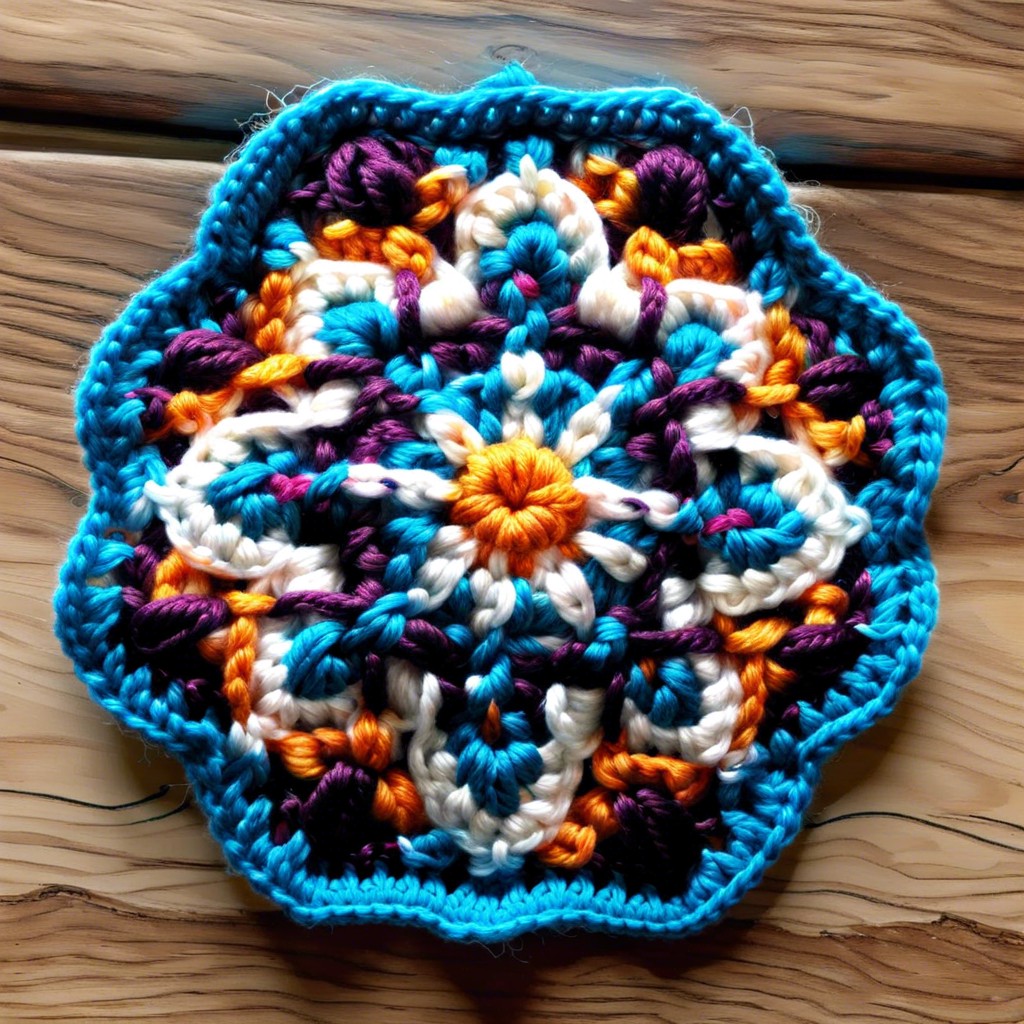Learn how to sc2tog (single crochet two together) with easy steps, and elevate your crochet projects by mastering a crucial technique for decreasing stitches.
Sc2tog—a mysterious crochet incantation or your pattern’s best friend? If you’ve found yourself tangled in stitches trying to master this decrease technique, look no further! Jump in to uncover how this sneaky stitch helps shape your projects and makes your creations wonderfully smooth. Read on to stitch like a pro!
Key takeaways:
- Sc2tog is a technique to decrease stitches in crochet.
- Decreases help create shapes and smooth transitions in patterns.
- Sc2tog is done by inserting the hook into two consecutive stitches.
- Yarn over and pull through all loops to complete the decrease.
- Sc2tog is used in patterns for shaping and achieving balance.
Decreasing in Single Crochet

So, you’ve mastered the single crochet stitch and now you’re ready to take things to the next level. Enter the world of decreasing!
Decreasing in single crochet is like the secret sauce in shaping your projects. It essentially means making two stitches become one, helping your work taper, curve, or snug up.
- Some concepts to know:
- Shaping: Want to make amigurumi toys or a sleek beanie? Decreases help create those curves and angles.
- Smooth Transitions: Avoid jagged edges in your patterns. Decreases make everything look tidy and professional.
- Pattern Reading: You’ll often see “sc2tog” in patterns, short for single crochet two together. It’s crochet lingo!
Now, let’s shimmy on to the fun part: actually doing it. Hold onto your yarn because magic is about to happen.
How to Single Crochet Two Together (Sc2tog) Step By Step
Let’s dive right in:
First, insert your hook into the next stitch.
Yarn over and pull through, leaving two loops on your hook.
Now, don’t finish that stitch just yet. Instead, insert your hook into the following stitch.
Yarn over and pull through again. You should now have three loops on your hook.
Finally, yarn over one more time and pull through all three loops in one go.
Voilà! You’ve just smooshed two stitches into one. Magic, right?
Begin Your First SC of the Pair
Start by inserting your hook into the next stitch, as if preparing for a regular single crochet. It’s crucial to stay calm and not panic; your yarn can smell fear.
Yarn over your hook, as though you’re about to serve it a tasty yarn sandwich. Pull that yarn through the stitch. You should now have two loops on your hook, like two best friends ready for an adventure.
Repeat the process on the following stitch, not the same one, we’re not into deja vu knitting. Insert the hook into the next stitch, yarn over, and pull through. Now you’ve got three loops chilling on your hook.
Those loops are ready for the next step, standing by like they’re about to jump off the high dive. Don’t leave them hanging!
Yarn Over and Pull Through All Stitches
Ready for the magic? Here’s where things get exciting. You’ve got two loops from your first SC. Now, insert your hook into the next stitch, yarn over, and pull up another loop. At this stage, your hook should look pretty stylish, sporting three loops.
Next, all you need is a confident yarn over. Get that yarn over the hook and pull through all three loops at once. Voilà! You’ve just created a sleek sc2tog and saved some stitches from feeling lonely.
Remember: the action is in the yarn over. That’s your secret handshake for combining those stitches. Like a yarn whisperer.
Where to Do a Sc2Tog Decrease
First off, you’ll usually spot sc2tog decreases in patterns that require shaping. Think hats, amigurumi, or even some stylish fitted garments. They help create curves and adjust fabric dimensions.
When you see sc2tog, aim to place it evenly throughout the row or round to keep things balanced. For instance, if you’re making a hat, it’s often worked at the crown to make it cozy and snug.
You might also see sc2tog used along the sides of a project to make more dramatic shaping, like in a sweater or top. Facial features in amigurumi often sneak in a few sc2tog to give your critters some charisma.
In summary: look for spots where the fabric needs to cinch in or taper. Remember, balance is key, and keeping your stitches consistent will make your project shine.





